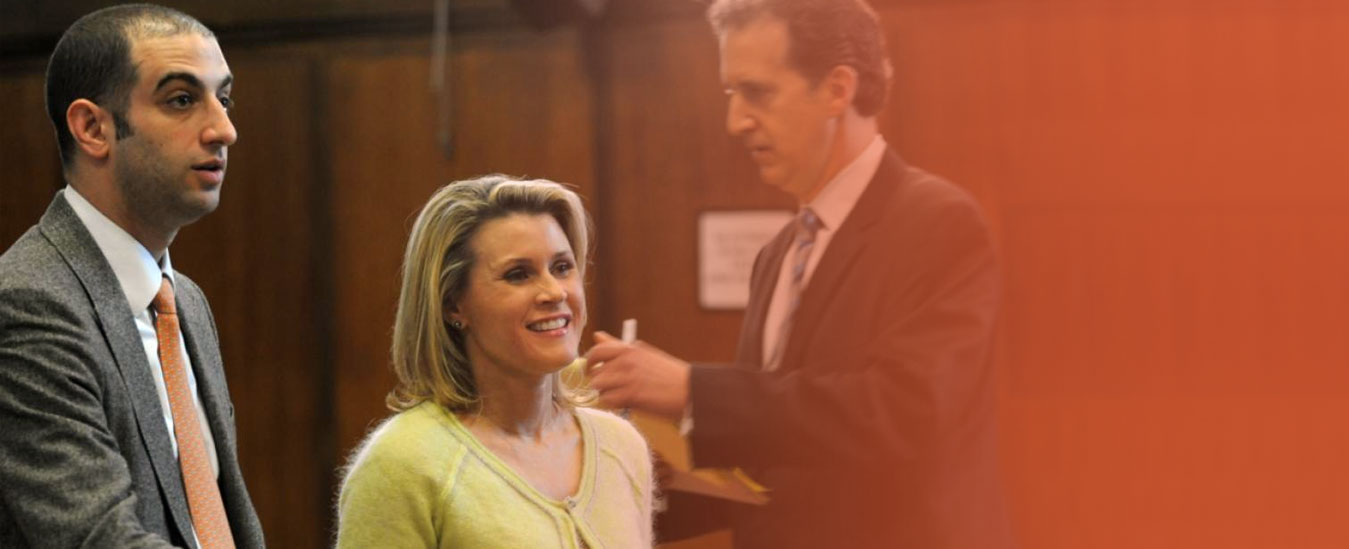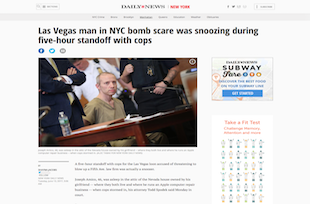New York Knife Laws
New York Knife Laws
Thanks for visiting Spodek Law Group – managed by Todd Spodek, a second-generation law firm with over 40 years of combined experience defending clients against weapons charges throughout New York. New York’s knife laws create a trap for law-abiding people who carry knives for work, outdoor activities, or self-defense. In 2019, New York repealed the statewide gravity knife ban after decades of arrests targeting working-class New Yorkers carrying ordinary folding knives. But the repeal didn’t end knife prosecutions – it just shifted enforcement strategies. **Switchblades remain illegal.** NYC bans blades 4+ inches in public. Transit regulations prohibit knives on subways and buses. And prosecutors charge knife possession as a weapon crime whenever they claim you intended to “use it unlawfully,” a subjective standard giving police enormous discretion to arrest.
When you’re charged under NY Penal Law Article 265 for criminal possession of a weapon, prosecutors don’t need to prove you used the knife – mere possession suffices if the knife falls into prohibited categories or if circumstances suggest unlawful intent. Defense requires understanding which knives are illegal per se (switchblades, metal knuckle knives) versus which become illegal based on how you possessed them (any knife with “intent to use unlawfully”). At Spodek Law Group – we challenge prosecutorial claims that your knife possession demonstrated criminal intent rather than lawful carry for work, hobby, or personal safety.
The 2019 Gravity Knife Repeal Didn’t End Arrests
For decades, New York criminalized gravity knives under Penal Law §265.01. The statute defined gravity knives as blades released by gravity or centrifugal force – originally targeting military-style knives like German paratrooper weapons. But NYPD interpreted “gravity knife” to include virtually any folding knife that could be opened with a wrist flick, arresting construction workers, tradespeople, and delivery workers carrying ordinary pocket knives for work. Courts upheld these arrests using the “wrist flick test” – if a cop could flick the knife open (often using force and technique the owner never employed), it qualified as an illegal gravity knife.
On May 30, 2019, New York repealed the gravity knife ban statewide. The legislature recognized that overly broad enforcement had criminalized common pocket knives, resulting in thousands of arrests for possessing tools indistinguishable from legal folders. Post-repeal, **gravity knife possession is no longer a crime under state Penal Law**. But three critical limitations remain:
- **NYC Transit still bans gravity knives:** True gravity knives remain illegal on subways, buses, and MTA property under transit regulations separate from Penal Law. If you’re caught with a gravity knife on the subway, transit police can arrest you even though statewide possession is legal.
- **”Intent to use unlawfully” prosecutions continue:** Even though gravity knives aren’t per se illegal anymore, prosecutors charge knife possession under §265.01(2) if they claim you possessed any knife with intent to use it unlawfully. This transforms legal knives into weapons based on subjective intent determinations.
- **NYPD still arrests people:** Despite the 2019 repeal, NYPD continues arresting people for knife possession, charging under different statutes (dangerous knife with unlawful intent, violation of NYC administrative code) or claiming the knife fits other prohibited categories.
The gravity knife repeal was a legislative victory recognizing prosecutorial overreach – but it didn’t eliminate knife prosecutions. It just forced prosecutors to charge under different theories, and defense now requires challenging their claims about your intent or the knife’s characteristics under remaining prohibitions.
Switchblades Remain Illegal With Narrow Exceptions
While gravity knives are now legal statewide, **switchblade knives remain prohibited** under NY Penal Law §265.01(1). Switchblades are defined as knives with blades that open automatically by push button, spring mechanism, or other device. Possession of a switchblade constitutes criminal possession of a weapon in the fourth degree, a Class A misdemeanor carrying up to one year in jail.
The switchblade ban includes limited exceptions:
- **Hunting, trapping, fishing:** If you possess a valid New York hunting, trapping, or fishing license and carry a switchblade for those activities, possession is legal. But prosecutors scrutinize this exception – carrying a switchblade in your car in the city claiming it’s for weekend fishing upstate probably won’t work.
- **Law enforcement and military:** On-duty police and military personnel are exempt from switchblade prohibitions.
For everyone else, switchblade possession is a crime regardless of why you have it. Prosecutors don’t need to prove you intended to use it unlawfully – the knife itself is contraband, and mere possession is sufficient for conviction. This makes switchblade charges easier to prosecute than “dangerous knife with intent” charges, where prosecutors must prove unlawful intent beyond the knife possession itself.
What Qualifies as a Switchblade?
Disputes arise over whether knives are switchblades or legal assisted-opening folders. Modern folding knives often feature assisted-opening mechanisms using springs or torsion bars to help deploy the blade after the user initiates opening. Are these switchblades? Prosecutors argue yes if any spring mechanism assists opening. Defense argues no because the user must manually initiate the opening (flipping a thumb stud or pulling a flipper tab), unlike true push-button switchblades that deploy with one action.
Courts haven’t consistently resolved this distinction. When you’re arrested for possessing an assisted-opening knife, prosecutors will characterize it as a switchblade. Your defense requires demonstrating the knife requires manual initiation and doesn’t deploy automatically with a single button push. At Spodek Law Group, we challenge prosecutorial overreach when they treat legal assisted-opening folders as illegal switchblades.
NYC’s 4-Inch Blade Rule Creates Arrest Traps
New York State Penal Law doesn’t specify a blade length limit for legal knives (except for specific prohibited types like switchblades). But **New York City Administrative Code §10-133 prohibits possession in public of any knife with a blade 4 inches or longer**, regardless of whether the blade is concealed or visible. This creates a geographic trap – what’s legal statewide becomes criminal when you cross into NYC.
Consider the practical consequences:
- **Travelers:** You drive into NYC with a 4.5-inch folding knife legally carried everywhere else in New York. The moment you enter city limits, you’re violating NYC administrative code and can be arrested.
- **Workers:** Construction workers, electricians, and tradespeople often carry knives exceeding 4 inches for work. NYC provides an exception for those “who carry knives for work that customarily requires the use of such knife,” but police determine at the scene whether your work “customarily requires” that specific knife length. Arrested on your way to a jobsite? Prosecutors claim you weren’t engaged in work at that moment, stripping the exception.
- **Outdoor enthusiasts:** Carrying a hunting or camping knife through NYC while traveling to upstate New York? That’s illegal in the city even though your destination and purpose are lawful.
Defense against NYC blade length violations requires showing you fall within an exception (work use, military, EMT/ambulance driver on duty) or challenging the measurement – prosecutors must prove the blade exceeds 4 inches, and measurement disputes arise when blades measure close to the limit. Your attorney should demand that prosecutors produce the actual knife and demonstrate proper measurement technique excluding handle, bolsters, or other non-blade components.
Intent to Use Unlawfully: Turning Legal Knives Into Weapons
NY Penal Law §265.01(2) criminalizes possessing “any dagger, dangerous knife, dirk, machete, razor, stiletto, imitation pistol, undetectable knife or any other dangerous or deadly instrument or weapon **with intent to use the same unlawfully against another**.” This provision allows prosecutors to charge knife possession as a weapon crime even when the knife doesn’t fall into prohibited categories (not a switchblade, not over 4 inches in NYC), based solely on claimed intent to use it unlawfully.
Prosecutors prove unlawful intent through circumstantial evidence:
- **Location and time:** Carrying a knife in a high-crime area late at night suggests weapon possession rather than utility use.
- **Your statements:** Told the cop you carry it for self-defense? Prosecutors argue that constitutes intent to use it against another person, making possession illegal even though self-defense is lawful. The statute criminalizes *unlawful* intent, but prosecutors conflate any intent to use against another person as unlawful.
- **Prior criminal history:** Past arrests for violence get used to infer current knife possession is for unlawful purposes.
- **Circumstances of discovery:** If police found the knife during a stop related to suspected criminal activity, they’ll argue the knife was possessed for use in that activity.
Defense requires establishing lawful purpose for possessing the knife – work, hobby, utility, travel. Even self-defense possession can be lawful if you demonstrate reasonable fear requiring self-protection, though this creates complicated legal issues because New York’s duty-to-retreat self-defense laws don’t authorize carrying weapons in anticipation of needing defense. Your attorney must challenge prosecutorial claims that your possession demonstrated unlawful intent rather than ordinary lawful carry.
NYC’s Visible Carry Ban: Even Clips and Hinges Violate Law
NYC Administrative Code §10-133(b) prohibits carrying knives “in such a manner that such… knife is visible.” This doesn’t just mean you can’t wear a knife openly on your belt – it means **any portion of the knife visible constitutes a violation**. If your pocket knife clip shows above your pocket edge, that’s visible carry. If the hinge or top of a folded knife is visible, that’s a violation. NYPD interprets “visible” to include any indication you’re carrying a knife, even when the blade itself is completely concealed.
This creates selective enforcement problems. Thousands of New Yorkers carry pocket knives with clips visible daily. Police don’t arrest everyone – they use the visible carry prohibition as grounds for stops, searches, and arrests when they want to investigate someone for other reasons. The knife clip gives them probable cause for a stop, which often leads to finding other contraband or outstanding warrants. When you’re charged with visible knife carry, prosecutors treat it as a standalone violation regardless of blade length or knife type.
At Spodek Law Group, we challenge visible carry arrests by questioning whether the knife was actually visible (did the officer truly see it, or is this a pretext stop?), whether the visibility was momentary and unintentional, and whether your work or other lawful activity provided exception to the prohibition. Todd Spodek’s defense of Anna Delvey showed what vigorous advocacy looks like when prosecutors construct charges based on ambiguous conduct. Knife prosecutions work similarly – police claim they saw something, prosecutors build a case around that claim, defense must expose inconsistencies and challenge the officer’s account.
New York knife laws criminalize ordinary tools based on type, length, location, visibility, and claimed intent. If you’re charged with criminal possession of a weapon for carrying a knife, you need attorneys who understand which prohibitions apply and how to challenge prosecutorial theories that your lawful knife possession constituted a crime. We’re available 24/7. Call us.














NJ CRIMINAL DEFENSE ATTORNEYS